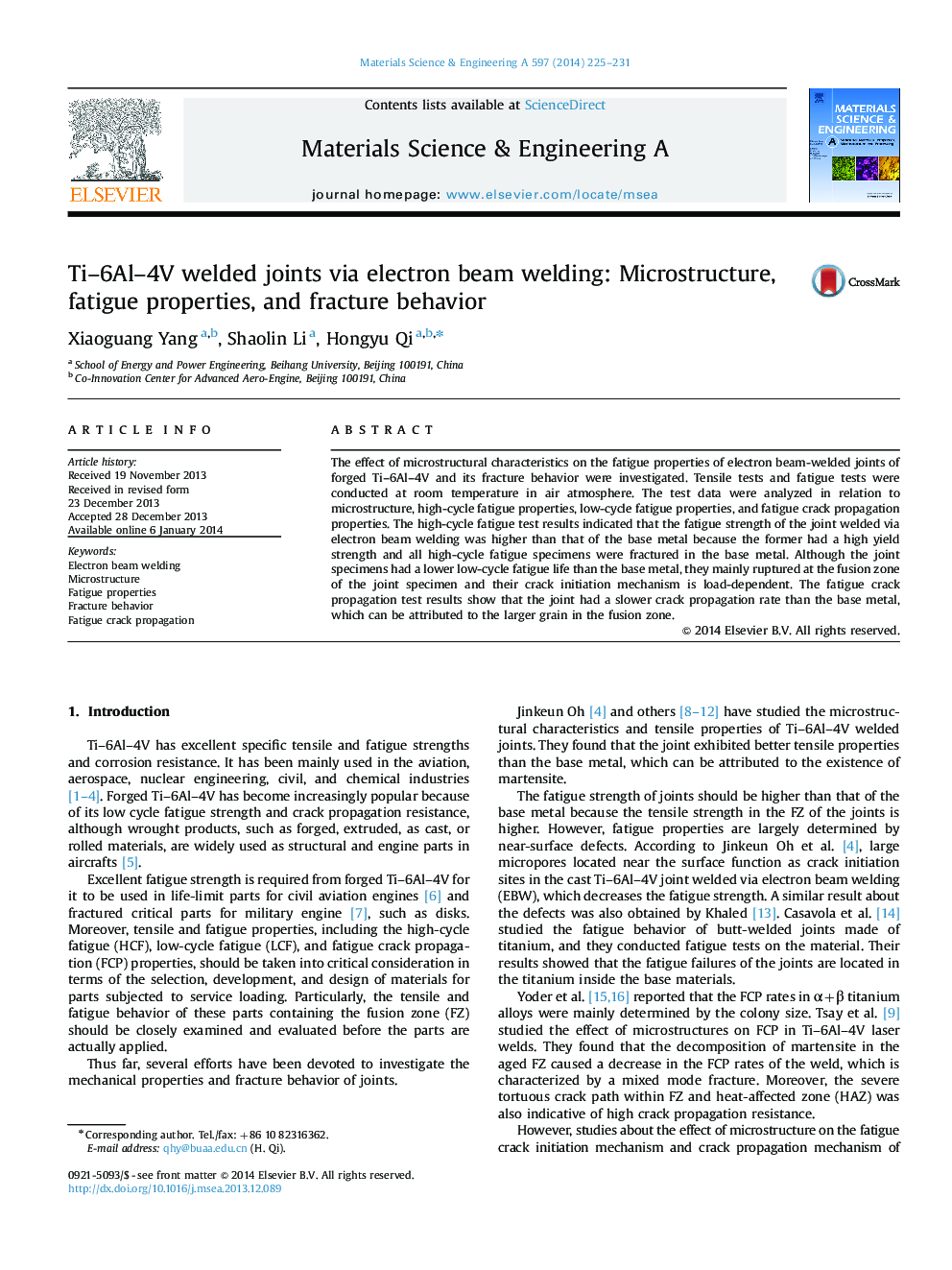| Article ID | Journal | Published Year | Pages | File Type |
|---|---|---|---|---|
| 7981431 | Materials Science and Engineering: A | 2014 | 7 Pages |
Abstract
The effect of microstructural characteristics on the fatigue properties of electron beam-welded joints of forged Ti-6Al-4V and its fracture behavior were investigated. Tensile tests and fatigue tests were conducted at room temperature in air atmosphere. The test data were analyzed in relation to microstructure, high-cycle fatigue properties, low-cycle fatigue properties, and fatigue crack propagation properties. The high-cycle fatigue test results indicated that the fatigue strength of the joint welded via electron beam welding was higher than that of the base metal because the former had a high yield strength and all high-cycle fatigue specimens were fractured in the base metal. Although the joint specimens had a lower low-cycle fatigue life than the base metal, they mainly ruptured at the fusion zone of the joint specimen and their crack initiation mechanism is load-dependent. The fatigue crack propagation test results show that the joint had a slower crack propagation rate than the base metal, which can be attributed to the larger grain in the fusion zone.
Keywords
Related Topics
Physical Sciences and Engineering
Materials Science
Materials Science (General)
Authors
Xiaoguang Yang, Shaolin Li, Hongyu Qi,
